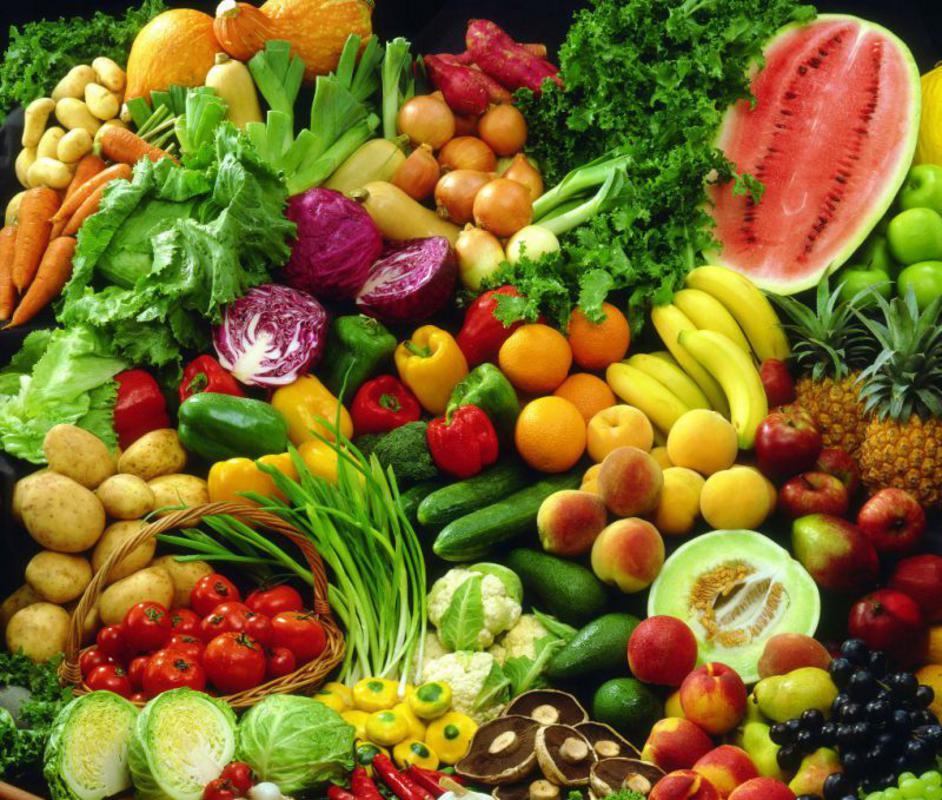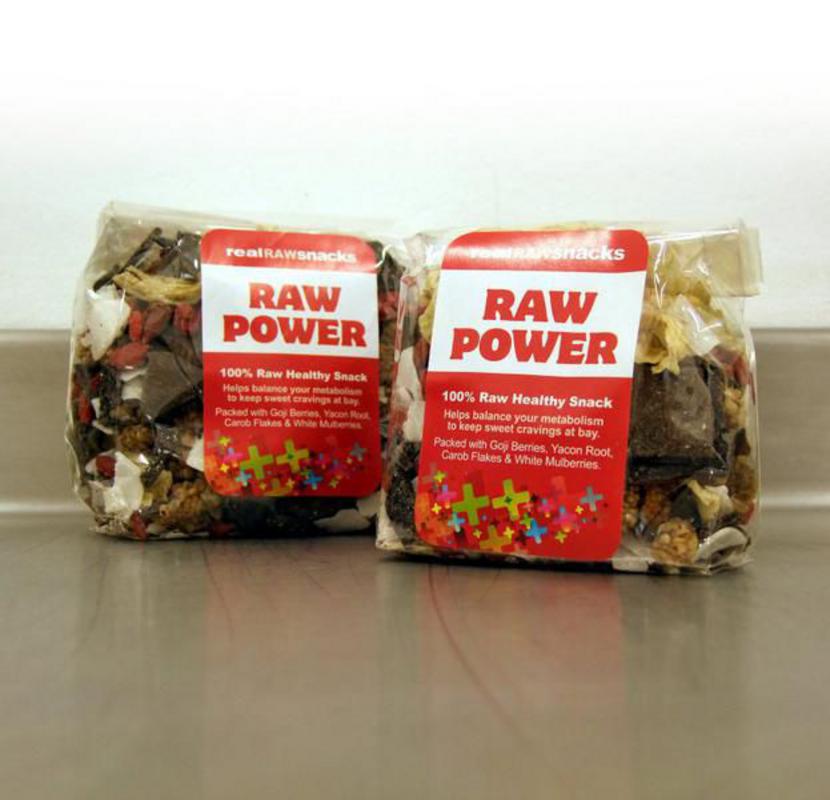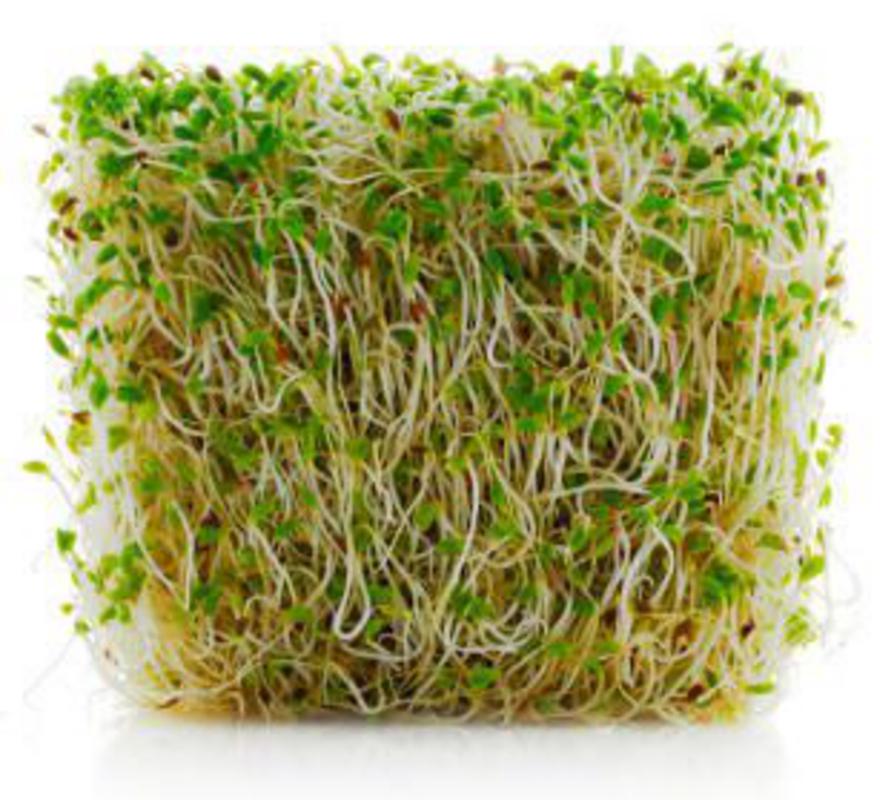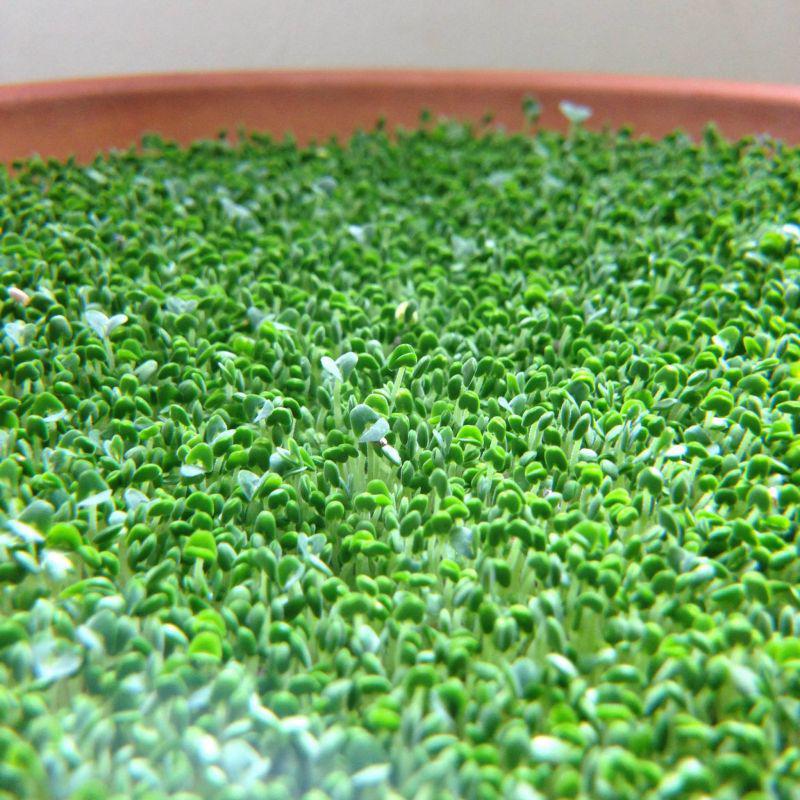A quick Real Foods' guide on what Raw Food to eat, why to eat it and links to some of our brilliant new products...

Raw Food (often called Living Food) is plant or animal food that has not been heated above 115 degrees Fahrenheit. When food is heated above this temperature, the enzymes in the food are destroyed or denatured and are therefore unable to provide the same nutritional value.
Enzymes are living biochemical factors that activate and carry out all the biological processes in the body such as digestion, nerve impulses, detoxification processes, the functioning of RNA/DNA, repair and healing of the body, and even the functioning of the mind. There are natural enzymes in raw food which enable the enzymes secreted by the digestive system to be used for the processes of detoxification, repair and overall healing instead of just digestion.
The idea that 'you are what you eat' has been around for a while, but many raw foodies believe that 'you are what your body is able to digest'. Good digestion is the cornerstone of getting the full nutritional value of your food. Follow this link if you are looking for an
additional digestive enzyme supplement.
There are people in the remotest parts of Pakistan, Russia and India who completely live off raw food with the inclusion of a little
rice every now and then and are also vegetarians. It has been found that in these societies there was no trace of heart problems, diabetes, hypertension and cancer.
Because raw food is in its’ natural state the body is able to take maximum nutritional benefit from it. Raw
fruits and
vegetables are rich in water content 70 – 90% because the body is 70% water it needs foods which are rich in water content.
When you eat cooked foods the body recognises it as poison (as the Swiss physician Dr Paul Kautchakoff in 1930 pointed out) and an immune response occurs. This is because of an increase in the amount and activity of leukocytes (white blood cells) occurs when undigested cooked food passes the gut wall. Whilst raw food contains the enzymes needed to digest it, cooked food does not. Heavily processed foods fared worst of all, showing a dramatic increase in white blood cell activity, identical to a food poisoning response (but without the bacterium). This, however, does not happen when raw foods are consumed therefore the body is stronger and more able to deal with an infection.
A raw food diet leads to weight loss for those who need to lose weight but without the feelings of hunger and fatigue that usually accompany most diets. It can lead to an improvement in your skin and increased energy levels.
Many junk foods and processed foods are highly acidic which puts stress on the body, therefore, encouraging weight gain and poor immunity. A raw food diet high in vegetables, however, is mainly alkaline which allows for clear thinking and a stronger immune system.
The average diet has far, far too much refined sugar in it. For our bodies to function at their optimal level, we need very little sugar. Getting these sugars from fresh, organic fruit or dried unsweetened dates and berries which have fibre, vitamins and nutrients in them is far better, leading to weight loss or maintenance, improved mood and a far happier immune system.
Many raw foodists are also vegan or vegetarian, but it's far from essential. Very few people are following 100% raw diets but many are aiming to have the majority of their meals raw, others a simply aiming for a healthy breakfast or even a sure-fire hangover cure! Whatever your thinking, choosing raw foods and taking time over the preparation will always reap benefits nutritionally.
As you can easily imagine a Raw Food diet involves lots of
raw fresh fruits and
vegetables. Most of our range of raw fruit and vegetables are organic (with a few exceptions for wild foraged mushrooms and locally sourced berries). Keep them in the fridge for maximum freshness (along with nuts, which can also go rancid quickly).
A raw pantry is full of staple raw foods.
Legumes and grains that have not been cooked or canned or processed. One of the reasons raw food can also be called living food is that soaking and sprouting from grains or beans is encouraged to bring out the full nutrition of the raw ingredients. We often get enquiries regarding raw oats. Sadly all of the oats we can source have been heat-treated to stabilise them and so cannot be considered a raw or living food. A
raw oat, sprouted and activated mix is available from Sun & Seed here.
Raw nuts and seeds are popular for adding good fats and great texture to dishes,
while raw nut and seed spreads are a good pantry fallback and popular for use in preparing raw food meals. Not all nuts and seeds are raw, for example, cashew nuts are frequently processed using hot oil bath techniques, so only those labelled raw are sold in our raw nuts and seeds. Nuts can go off if not carefully stored, for maximum freshness buy nuts in shells which keep far longer. Or try one of our
raw mixes available here.
Dried fruit is often used as a snack or for sweetening dishes. Dried fruit provides natural sweetness and can be chopped or blended with other ingredients.

Or try one of the raw sweeteners like agave nectar, date syrup or stevia. Raw Honey isn't for everyone (many Raw Foodists are also vegan) but it is a staple for many raw chefs.
Raw Seaweeds and Sea Vegetables are dried ingredients that usually require soaking before use. They are exceptionally tasty and packed full of nutrition. Some Raw Foodists follow around an 80% Raw Food diet and will add a variety of Japanese foods and seasonings, which whilst not strictly raw often contain beneficial enzymes and are living. Try one of these fermented drinks or spreads.
Fresh herbs are essential for adding taste and goodness to your meals. Raw Spices are hard to source, try grinding your own spice blend from whole spices or dry the herbs for truly raw seasoning.
Raw Seasonings are often seaweed based so that the use of salt is unnecessary.
Raw Cacao nibs, paste, powder and liquor are available to
make your own raw chocolate or to add interest to recipes. If you're not confident of your chocolate confection skills, try one of the large range of ready-made
raw chocolates here.
All the foods which you eat should be organic as the vitamin, mineral and enzyme count can be up to 50% higher in organic produce.

Sprouts are a staple food on a raw food diet as they are a concentrated natural source of vitamins, minerals, enzymes, trace elements, amino acids and protein. Sprouts are very easy to grow in your own home and it means that you can prepare as much as you need, which in turn means less waste. It's also cheap and environmentally friendly, a handful of seeds will turn into fresh, nutritious snacks within days.
Sprouting simply means allowing a variety of pulses, seeds and cereals to germinate and grow delicious young shoots and growing your own means enjoying fresh, crisp sprouts every day, year-round. Sowing, growing and harvesting your crop can be a satisfying process, especially for those of us without outdoor space to cultivate.
Seeds to sow
Young shoots are bursting with beneficial vitamins and minerals so eating plants at this phase delivers the biggest boost of nutrients to your body. Alfalfa sprouts are said to be the most nutritious of all, with vitamins A, B, C, E and K, calcium, magnesium, potassium, iron and zinc, 35% protein, and as much carotene as carrots.
Sprouts are ideal for imparting fresh flavour, crisp texture and interest to a wide range of dishes. Try adding them to soups, salads, sandwiches, wraps and Asian-influenced cuisine.
Why not try this tasty and nutritious Sprout Super Food Salad recipe as a way of enjoying your fresh homegrown sprouts.
All
nuts should be soaked for at least a few hours before eating in order to activate the enzymes within them. The other most common things that you will sprout on a raw food diet are:
How to sprout at home
We have everything you need to get started in sprouting and to make the soaking and rinsing process easy, find our full range of sprouting equipment here
To sprout at home you will need:
Water – Soaking, rinsing and draining are all essential for healthy, tasty sprouts
Cleanliness – Your seeds should be clean and your equipment sterile
Air - like any small plant, sprouts need air to breathe, without it, they will succumb to mould and rot more easily. Don’t put them in sealed containers and make sure that they get enough air
Warmth - Optimum temperatures vary but 70 to 75 f is a good start. Too hot and they’ll wilt, lose vitality and die. Colder temperatures will slow growth and are good for storage, but don’t freeze them.
A container - this depends on the type of seed. Bags, trays and jars are the most common but people have grown sprouts in plantpots, colanders and even takeout containers!
 Step One- Choose a container
Step One- Choose a container
Try BioSnacky's Germinators (large or small) for an easy jar method. Or use your own glass jar with a mesh lid or cheesecloth.
Bags - A reusable option is the Detox Your World Nut Mylk & Sprout Bag, a nylon mesh bag with a drawstring that can be used to make a variety of living foods including sprouts, fruit juice and nut milk. Or try Living Milk's Universal Nut Milk mesh bag here. Or try making your own, it needs to be a loose-weave material, ideally with a drawstring for ease-of-use.
For a constant supply of a variety of sprouts, Being Fare Bean & Seed Sprouter has three tiered shelves and comes with a packet of alfalfa seeds.
Tray or dish. Unglazed terracotta, ceramic or clay is the best. This is ideal for Chia, Rocket, Cress, Linseed or Radish seeds.
Step Two – Rinse
Start with a proper rinse, remove any debris or dirt. Use cool water (60-70°). Use lots of water, ideally at a fairly high pressure to get rid of any dirt or foreign objects.
Step Three – Soak Seeds
Sprouts will need to be soaked first. Soak organic seeds for 8-12 hours or overnight in lots of water, some larger seeds may need longer.
Jars are the most common for this very reason, you don’t need to switch out your container when you move to the sprouting process. You’ll want it about 2/3 full of cool water with the rinsed seeds at the bottom. Use large glass jars for larger beans and seeds. You will need a sprouting lid for it – one which allows airflow and will allow drainage from each rinse. Mesh sprouting screens and lids are available, but many people simply use cheesecloth or other loose-weave cloths and an elastic band.
Bag – you can transfer to the sprout bag after the seeds are thoroughly drained after being soaked overnight.
Tray/Plate - Fill the dish or tray with water. Let it soak for several minutes then drain. Sprinkle your seeds onto the dish, they should be evenly spread and only a single layer. There should be space between seeds to allow them to spread while growing. Cover with clear glass or plastic bowl and place in a sunny spot.
Step Four- Drain
Sprouts MUST be drained properly after rinsing, if you don’t they will mould and your sprout crop will fail. Rinse them thoroughly, with lots of water and then drain as much of the water out as is possible.
Jar - It is important to drain the seeds well, for several hours, while allowing plenty of air circulation. Mesh lids work well for this step, as the jar may be inverted and propped at an angle to drain for long periods.
Bag – This is where the bag is great, simply rinse thoroughly and hang on a hook to drain properly
Tray or plate - Standing water is a good way to encourage rot. Leave trays at an angle for a minute or so, or briefly, put them on some tissue to wick the water away (don’t leave them on it or they may dry out.)
Step Five – Rinse, Drain and Repeat
Rinse 2-3 times daily, at least every 12 hours. Use cool water (60-70°). Use a lot of water, ideally high water pressure whenever possible. Sprouts generate heat when they grow, which is why using cool water to compensate helps.
Rinse gently to avoid damaging tender new sprouts. Usually, 2-3 days of rinsing and draining about 3 times per day is sufficient.
Trays need careful spraying in the beginning as it washes away mould causing fungi, but try not to move sprouts around as they root. Once they’re fixed immerse them in water for at least half a minute. Swishing them about, (and especially inverting them,) helps to remove seed hulls.
Lots of water to rinse, lots of time to drain thoroughly will mean your sprouts will germinate.
Step 6 – Harvest
Harvest sprouts carefully by gently pulling ripe ones out from the rest. This allows less developed ones to continue growing so you get several harvests of perfect sprouts.
Sprouts are easy to grow in small batches so that there are fresh sprouts to eat daily. However, if storing is necessary, make sure the sprouts have drained completely before storing. Transfer to a glass or plastic container, seal tightly and store in the refrigerator for a few days.
Store them in a plastic bag in a cool dark place, such as a fridge, and rinse them every 3 days or so. Most sprouts will keep at least a week like this and often longer.
Raw Food can be as delicious as cooked food, and often even tastier. Have a look at our extensive
range of recipes for new ideas. Here are some tips to get the most from your food.
-
Use the freshest, ripest organic produce available. You'll get the benefits of improved taste and nutrition.
-
Use your old favourite recipes to create new ones, if you loved the taste of apple and walnut cake, try recreating it with this raw apple cake recipe. If you adore chocolate crispies try these raw versions from Raw Living or invent your own recipe!
-
Try replacing cooked vegetables with marinated ones, flax or linseed oil in place of butter and have a look at this raw empty fridge sushi recipe for some brilliant ideas with a Japanese twist.
-
Try to use foods you've never used before and enjoy experimenting.
-
For a sour taste try: Apple cider vinegar, sorrel, rhubarb, cranberries or lemons
-
For a spicy taste try: cayenne pepper, ginger, garlic leaves or cloves, radish, wakame, wasabi or horseradish
-
For a bitter taste try: Celery tops, dandelion, onion, sage, rocket or parsley
-
For a salty taste try: Sea vegetables such as dulse, kelp and nori, coriander, dill or celery
-
For a sweet taste try: Apple juice, dried fruit, orange juice, alternative sweeteners or raw honey
Kitchen equipment that you will need:
A dehydrator which uses a low temperature and a fan to dry food can also be used as it will allow you to warm foods on a cold day; make your own raw cookies, crackers and burgers; prepare seasoned
nuts and seeds for snacks and make dried fruit slices.
Storage containers with tight-fitting lids for safe storage of unprocessed foods.
How do I start a Raw Food Diet?
The best way to start the journey towards a raw food diet is to start slowly. Perhaps start with a raw breakfast every day and slowly build up the amount of raw food that you are eating with every meal.
Books that can help you on your journey are: